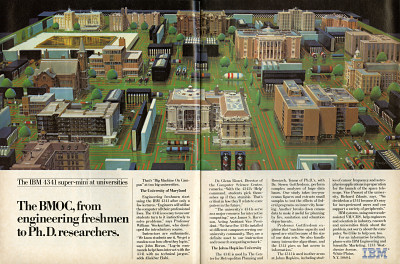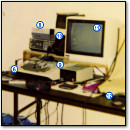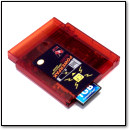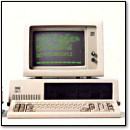[ Retro Scan ] IBM 4341 Super-Mini
July 12th, 2019 by Benj Edwards A controller bigger than your head
A controller bigger than your head
As far as I recall, this is the first time I’ve ever featured an advertisement for an IBM mainframe computer system on VC&G. The system in question is the IBM 4341, a System/370-compatible model first launched in 1979 and discontinued in 1986.
In this 1984 ad, we catch the system — apparently used commonly at universities — near the end of its lifespan. Other than this ad, I know nothing else about it. But Wikipedia does.
Huge IBM mainframes at universities predate my time in college — I’m actually glad I never had to use them.
Discussion Topic: Have you ever used an IBM mainframe computer? Tell us about it.






July 18th, 2019 at 10:56 am
We had an IBM System/34 in high school in the mid-80’s with a room full of terminals. Not sure that quite counts as a mainframe though. It was pretty outdated even then and pretty slow. I think it was just used for the BASIC class. It was replaced by a room full of original IBM PCs instead, which ran circles around the old 34. Only two of them had color monitors with CGA graphics. The rest were the old green monochrome screens, but we still loved them.
July 22nd, 2019 at 4:25 pm
Wow, that brings back memories. We had a 4341 at my university in the early 1980s. It ran VM/CMS (Conversational Monitor System) and we had access to FORTRAN, COBOL, and Pascal compilers as well as a text editor called XEDIT. We could also do statistical analysis using early versions of SAS (yeah, *that* SAS) software. The 4341 used the concept of a virtual machine, similar to VMWare or VirtualBox on computers today, so it “looked” like you had the whole machine to yourself. But with a bunch of students doing computer science homework assignments on it it sure didn’t *feel* like you had the machine to yourself.
Now a $35 Raspberry Pi will run rings around the old 4341.
July 23rd, 2019 at 12:55 pm
When I went to the University of British Columbia in 1983 it had an Amdahl 370 clone running Michigan Terminal System (MTS). Mostly accessed via terminals, LanPar in the first year, 2nd year students and up got to use VT-100’s. They were all over campus and connected to the mainframe though an X.25 network called UBC-NET. There were some line printers around but most output you got from a Xerox 9700 laser printer that was in the machine room and tended to by operators. You’d go to the basement of the computer science building and find your printing filed in a mailbox under the last letter of your 4 letter alphanumeric user ID.
You paid for computer time. Each compile or edit used up some many computer dollars. Each course that required it would give you so many dollars per semester. You could beg for more or buy “computer bux” punched cards at the bookstore. There were punched card readers around you could run them through with your account punched on another card to top-up your account.
There was still a few courses who used punched cards for programming at the time. Your program went a line at a time onto cards. You’d then put a “run” card on your deck and stick it into a reader. This automatically routed the output to a printer in the lab. If all went well the printer would spew out the listing of the program as it compiled followed by the output of running it. You could then take the printout and look at the compiler errors or (with luck) the actual program output.
The file system was a single directory per user. Files could be read and written sequentially but internally they were all B-Trees with line numbers as keys. The editor would show you the line numbers. It was rather like BASIC on personal computers but the numbers could be fractional so there was an awful lot of room between line 1 and line 2.
The X.25 network was packet based but wasn’t a problem on the terminals as I believe they used local line editing to hide the latency. Later when Unix machines started coming in the old terminals could still be used but in full screen mode there was often quite a delay between typing a letter and having it show up. You don’t really notice when simply inputting a stream of text but for interactive work like editing it was a challenge. I learned to love vi on those terminals because you could make do cursor motions and predict where it would get you to allow typing without having to confirm the position. I might type, say, “jwaHello” if I wanted to put “Hello” after the word just below the cursor.
July 30th, 2019 at 6:29 am
Really cool stories, guys. Thanks for sharing!